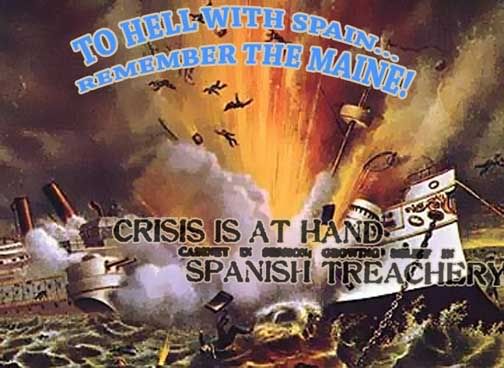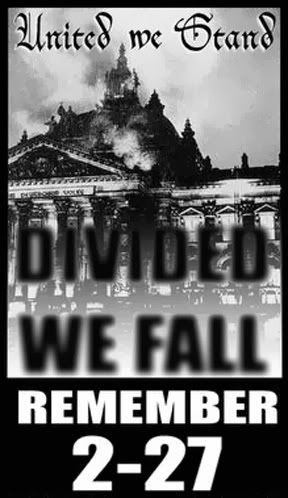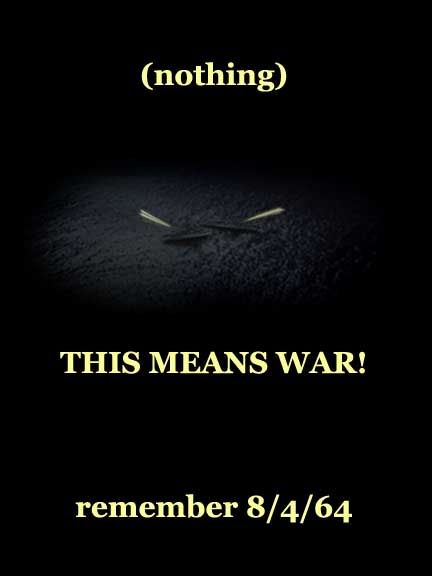Adam Larson / Caustic Logic
December 15 2009 update 1/6/10
Note 1/6/10: Too many small errors to fix. Don't cite this piece but do feel free to follow leads and double-check.
---
Tonkin Gulf and the DESOTO Precedent
For some indirect insight on Lockerbie, allow me to turn to two prior events – one decades past, the other bare months. The title of this post is inspired by Edwin E. Moïse’s book “Tonkin Gulf and the Escalation of the Vietnam War.” (Chapel Hill /University of North Carolina Press. 1997. 255 pages). It was actually two Tonkin Gulf incidents, one overblown and the other complete fantasy, that enabled the widening of the conflict. These were sparked by a naval tactic called the “DESOTO patrol,” in which an unescorted destroyer specially equipped for communications surveillance, was sent as far as possible into the coastal waters of Communist Asia. The twin goals were to flaunt the enemy’s concept of territory while collecting intelligence for eventual hostile use. The missions were always marked by high tension. [Desoto patrols explained ]
Under Admiral Thomas H. Moorer’s guidance, such patrols were increased along the coast of North Vietnam in mid-1964, as US-engineered coastal raids (OPLAN 34-A) were also increased to put the DRV forces further on edge and stimulate “chatter” to analyze. The mission given to the USS Maddox in August has been described as “the delicate task of stimulating coastal defenses without provoking an attack,” a balance made harder by the added agitations. [1] The attack on the Maddox that was finally reported triggered a third and hidden (or unanticipated) power of the Desoto patrol – to start a war. And that crucial second attack didn’t even occur in reality - not for lack of trying.
The escalated Vietnam War of course went sour over the years, in the shadow of that initial dubious incident. It was the same type of patrol the USS Pueblo was on when disastrously captured by the North Koreans in early 1968, and a possibly similar mission that led to the USS Liberty incident the year before that. These plus lesser mishaps led to a decision in 1968 to stop such missions. The awkward U.S. loss of Saigon, plus Watergate and so on, changed the political calculus of manufactured crises. The “Remember the Maine” mentality just wasn’t going to work in the 1970s.
But the same notion of highly-portable naval sovereignty, with all the firepower to enforce it, continued - in, for example, the Persian Gulf in the latter 1980s.
Different Gulf, Different Decade, Different Moves
After Iraq attacked Iran in 1980, with tacit U.S. approval, Washington took Iraq’s side to ensure it didn’t lose in the bitter, grueling war that ensued. Towards this end, the U.S. re-flagged as its own supply and oil vessels coming to or going from Iraq - largely Kuwaiti oil tankers. This made them off-limits to Iran’s attempt at blockade. In Operation Earnest Will, U.S. Naval forces escorted them as well, enforcing its own blockades while denying Iran’s. Instances of Americans opening fire on Iranian forces and facilities rose steadily as well as the conflict dragged on; Operation Praying Mantis responded to Iranian mining with escalated U.S. attacks on Iranian gunboats, oil platforms, and tankers on April 18 1988. [2]
The covert US-Iraq alliance had intensified in latter 1987. Ironically, this was following the accidental Iraqi air attack on the USS Stark – with 37 sailors killed, it proved exactly to Iraq what the USS Liberty incident was to Israel, but in miniature; American cooperation increased. Advisers went to Baghdad full time, originally to prevent further such mishaps, “but the end result,” explained a 1992 Nightline report on America’s secret war, “was that the United States helped Iraq conduct long-range strikes against key Iranian targets, using U.S. ships as navigational aids. “We became,” as one senior U.S. officer told us, “forward air controllers for the Iraqi air force.”” [3]
Two conjoined decision of Late April 1988, following Operation Praying Mantis, set the stage for the IA655 incident: the expansion of shipping protection in the Gulf to all neutral vessels and the dispatch of the USS Vincennes to bolster the force backing it up. [4] The high-tech vessel (a Ticonderoga class AEGIS guided missile cruiser, introduced 1985 and also called "Roboship") was equipped for advanced surveillance of just about every frequency except, apparently, civilian air control traffic. Its combat speciality was surface to air engagements, a poor fit for the surface-surface work it was sent for. But the more aggressive attitude in the Gulf was well embodied by The Vincennes’ commanding officer, Captain William C. Rogers; according to those who worked behind him in the Gulf he was overly-aggressive, but then he may have been privy to certain unusual standards they weren’t.
The details of the incident are still new to this author and beyond the scope of this article, but the story of how the Vincennes came to do battle with Flight 655 seems highly dubious. Around 10:00 local time, the cruiser’s amazing receivers picked up two distress calls from neutral vessels under attack by Iranian vessels, and sent it heliopter to look, which in turn reported being fired on. According to information uncovered by ABC Nightline and Newsweek, one of these signals was later denied by the boat’s captain – he never came under attack nor asked for help. The other was from a completely non-existent “Liberian” vessel. [5]
Both signals were themselves forgeries - pure radio signal fakery as part of a U.S. plot to draw Iranian vessels out to join in the fake melee and become exposed to counter-attack by the Navy. Lt. Col. Roger Charles told Nightline the Navy thus “enticed, in fact, entrapped the Iranian gunboats into a situation where we could then say that there’s been a hostile action by them … And that then allowed — under this kind of specious rule of loosened hot pursuit — us to take military action.” [6] It was to the aid of these ghosts that Captain Rogers sped, like a duck hunter headed to where the decoys were laid, ready to pop any attackers lured out or any threat to his expensive ship.
The Incident and the American Message to Iran
Into this dangerous situation flew Iran Air Flight 655. An Airbus A300B2 with 290 passengers aboard (mostly Iranians, including 66 children), it departed from Bandar Abbas at 10:17 for its 28-minute flight to Bahrain Airport. It seems the plane was talking normally with ground control (in English), was well within an established civilian air corridor, climbing up rather than swooping down for an attack, and transmitting the right civilian transponder code that clearly means don’t shoot. [7]
But the Vincennes had the wrong equipment to hear the control chatter, and apparently the wrong crew for everything else. They misread the transponder signals as being from a MiG fighter jet. They misread its location as several miles outside the civilian corridor. They somehow missed the civil flight listing that would identify it by flight number. They may have failed to properly transmit their warning signals, as the “fighter” refused to turn away. These and other errors all happened at the same time in that dense fog-bank of war effect that only materializes under peculiar conditions like this, and quite often benefits the U.S. of A in no-longer-surprising ways.
So to summarize, on this poorly-run duck hunt, they decided that a fighter jet had been lured out as well as the gunboats - and that’s a bigger and more exotic prize. So with all the storm of mental short-circuits aside, it made perfect sense to fire two missiles at it. 290 non-combatant souls were snuffed out – some in the explosion that made the plane disintegrate, the rest after a three-mile fall to hit the Gulf’s warm waters. Video shows the ship’s crew elated to have hit the bad guy – they weren’t told until hours later what they’d really done, and apparently they didn’t figure it out in the meantime, even with the ship's data records to review.
One overriding message the United States government sent to Iran, aside from vague “regret” over this accident, can be seen in its public pronouncements. Consider the last sentence of President Reagan’s first statement of July 3: “The only U.S. interest in the Persian Gulf is peace, and this tragedy reinforces the need to achieve that goal with all possible speed.” [8] It sounds nicely utopian, but it surely wasn’t meant that way. White House media handler Marlin Fitzwater made the message a little more explicitly a week later:
Only an end to the war, an objective we desire, can halt the immense suffering in the region and put an end to innocent loss of life. Our goal is peace in the Gulf and on land. We urge Iran and Iraq to work with the Security Council for an urgent comprehensive settlement of the war pursuant to Resolution 598. Meanwhile, United States forces will continue their mission in the area, keenly aware of the risks involved and ready to face them. [9]
That is, as the Iranians likely read it, wey’ll keep on shooting at anything that might possibly be a threat as long as we “have to” hang around there, which is until Iran surrenders. Charles Price, US Ambassador to UK later said “this incident wouldn’t have happened if Iran wasn’t, and hadn’t been in the process now for a long time, of attacking U.S. and other shipping in the Gulf.” [10] This is certainly a contributing factor, along with the U.S. decision to fake some of these attacks electronically and lure hem into a fight, the decision to equip, staff, and deploy the Vincennes in such a way that it became deadly to civil airliners, etc. For that matter it wouldn’t happen if the airplane had never been invented. So many variables and alternate outcomes riddle this case, that Price picked on Iran’s small role, played with such limited options, shows the issue at hand – their options were narrower yet and they’d better stop shooting altogether.
Iran Surrenders / A Leaf on the Wind
Since Iraq started the war in 1980, its course had been a grueling back and forth, with steady but modest Iranian gains into Iraqi territory by the end of 1987. UN Security Council Resolution 598 had called for a return to pre-war boundaries, making Iran reluctant to agree, even as the pain deepened. Then Iraq started another push-back in early 1988: long-range bombardment increased, and American assistance got more hands-on as well, as we’ve seen. The balance might have shifted back yet again but for what happened in July.
The shooting down of IA655 undoubtedly contributed to hastening Iran’s effective surrender. However, the precise role it played – minor, major, or peripheral, is difficult to know. Adding to new anxieties, just days after the incident, Iraqi forces “dropped chemical cyanide bombs” on the Kurdish village of Zardan on the Iranian side. Again hundreds were killed and “the enraged Iranians considered a huge rearming and nuclear weapons, but decided that this was beyond their means” by that time. [11] So July was a bad month for Iran - on top of the cumulative effects of years of similar woe, the loss of the Airbus to Americans in particular put a deeper fear than ever across the Persian mind. As an Iranian scholar stated at a conference hosted by the Woodrow Wilson Center (paraphrased)
“[A] turning point in Iran's thinking came with the shooting down of an Iranian passenger plane in July 1988 by the American cruiser USS Vincennes. That incident apparently led Ayatollah Khomeini to conclude that Iran could not risk the possibility of U.S. open combat operations against Iran and he decided it was time to end the conflict." [12]
There’s every reason to believe that’s just what the Americans wanted to get across, after the tragedy if not shortly before as well. This author is not eager to conclude there was any design to kill hundreds of innocents – but there are some very hard questions to address at another date.
The fighting did continue but Iran’s mindset was definitely shifting and quickly – hostilities officially and physically ended just six weeks after the Vincennes incident, on August 20. Iranian organized revenge meeting were already taking place by then, and their selected contractor groups were making their airliner radio bombs by the time the “Autumn Leaves” were shaken loose in Germany in October. It seems all too likely one of these Iranian grown leaves drifted right across the English Channel and lighted itself in the belly of PA103 on 21 December, less than six months after Captain Rogers’ duck hunt. A half hour after takeoff, it exacted an exact revenge, leaving 259 to deal with five miles of pure gravity however they did before dying against the cold winter soil of Scotland.
That, or the Iranians just gave up after the Germany bust, and the Libyans took their own incidental revenge for something else at just that time, as the FBI, CIA, USG, Scottish Police, Camp Zeist judges, and others claim to believe.
---
Sources:
[1] Rust, William. "The "phantom battle" that led to war; can it happen again?" US News and World Report. July 23, 1984. Posted online December 3 2005. http://www.usnews.com/usnews/news/articles/051203/3phantombattle.htm
[2]Operation Praying Mantis. Wikipedia. http://en.wikipedia.org/wiki/Operation_Praying_Mantis
[3, 5, 6] "The USS Vincennes: Public War, Secret War" ABC Nightline, Aired July 1 1992. Full Transcript, with extensive notes.
http://homepage.ntlworld.com/jksonc/docs/ir655-nightline-19920701.html
[4] Kelley, Stephen Andrew. Better Lucky Than Good: Operation Earnest Will as Gunboat Diplomacy. (Naval Postgraduate School. June 2007. PDF link:
http://stinet.dtic.mil/oai/oai?&verb=getRecord&metadataPrefix=html&identifier=ADA470423
[7, 8, 9] Ghasemi, Shapour. “Shooting Down Iran Air 655 [IA655]” Iran Chamber Society: History of Iran. 2004. http://www.iranchamber.com/history/articles/shootingdown_iranair_flight655.php
[10] The Maltese Double Cross - 32:00 mark
[11] http://en.wikipedia.org/wiki/Iran-Iraq_War
[12] http://wilsoncenter.org/index.cfm?fuseaction=news.print&news_id=90411&stoplayout=true













2 comments:
An interesting article on a very difficult subject. I attempted to cover the same ground in my article "The Shootdown of Iranair 655 The "Vincennes Incident" at part IV of The Masonic Verses at http://e-zeecon,blogspot.com. I thought the central point was that the "fog of war" you refer to and the pressure of time Captain Rogers was under was entirely as a result of his own actions.
Incidentally flight 655 was flying to Abu Dhabi not Bahrain (base of the US fleet and in a different direction)) and it is unlikely that the crew mistook the contact for a MiG fighter. Until the Iraqi airforce decamped to Iran they didn't have any MiGs!
It is widely assumed the crew thought it was an F-14 fighter although in his memoirs "Storm Centre" Captain Rogers claims he was warned by fleet HQ that the Iranians were converting their F-4s to carry "iron bombs" (presumably unguided weapons). It would be interesting to know if this warning was actually promulgated.
I really commented to draw your attention to the quite astonishing revelations in Patrick Tyler's brilliant book "A World of Trouble" (published 2009) that US officers were actually sent to Iraq to direct Iraqi operations including the deployment of chemical weapons!
With best wishes,
Dubai - Bahrain - dunno how I got those mixed up. There are a number of small errrs and imcomplete facts here - not the best article but writing it helped me gat a half grip on the issue.
This story to me seems a VERY awkward event to keep tangled up with 103, as its cause no less. Little wonder the Iranian role was fudged away by the Libya "portion."
You read quite a few books - I see you spend a lot of time at the library. My local one has exactly one book on Lockerbie, by Steve Emmerson and I'm just too broke to buy any books like I did with Pearl Harbor and the Liberty Incident. But I've added that book to my list for when I can afford one or two books (already have about ten on the list!)
Cheers!
- Adam
Post a Comment